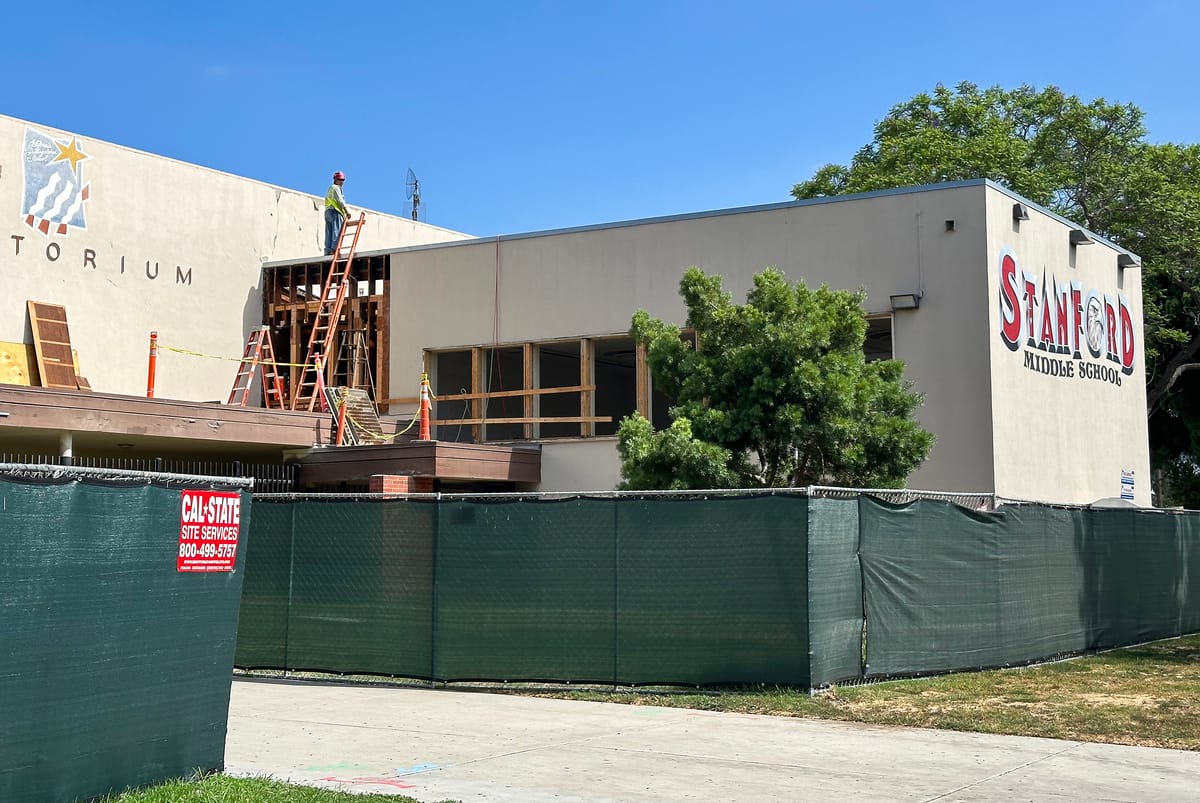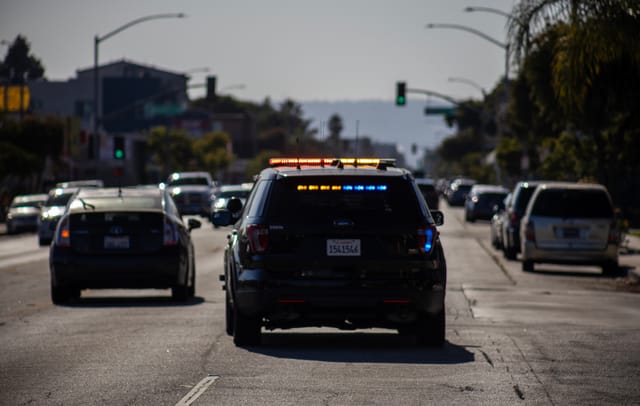LBUSD students were ‘suffering’ amid recent heatwave — and some schools still won’t have AC for years
Studies show that students who are uncomfortable due to heat and other issues such as hunger are less likely to retain information.

Summer is officially over, leaving behind the worst of the Southern California heat, which reached upward of 109 degrees in some areas of Long Beach earlier this month. The cooler weather is a welcome respite for students at Long Beach schools still without air conditioning, but many will have to brave the summer heat again for years to come.
During the recent heatwave, which saw temperatures between 85 degrees and 109 degrees for nine days in a row, parents said their students were “suffering.”
“After the 20-minute ride in the air conditioned car to my house, they still were suffering and had red faces and were exhausted,” said Lori Shepler, who has two students enrolled at Carver Elementary, which does not have AC. “The first thing my son did when he got into the house was lay on the couch and he looked like he was sick.”
Of the district’s 84 schools, 13 do not have air conditioning, including Carver, Tucker Elementary, Henry Elementary, Los Cerritos Elementary, Gant Elementary, Tincher Preparatory; Stanford Middle, Hoover Middle, Marshall Middle, Washington Middle; and Poly High, Sato High and Millikan High schools.
Shepler said teachers gave students ice packs for their heads amid the high temperatures.
Another parent, who asked to remain anonymous, also said her second grader was coming home from Carver red-faced. The parent said students were told they would get “cool-down breaks” in an air-conditioned room, but was told it was only one time when students went into the auditorium for recess.
The anonymous parent acknowledged the ice packs and said students also were given popsicles, but added that it was not enough. Finally, the parent sent their student to school with a handheld fan and a cooling towel originally intended for soccer games and hot days and Disneyland.
“I never thought I would be sending her to school with them,” the parent said.
Numerous studies have found that students perform better and retain more information when they are free from discomforts such as hunger and extreme weather. A 2017 Harvard study by Jisung Park found that hot days reduced student performance on exams by up to 14%.
A 2018 study out of the Harvard Kennedy School found that, without AC, each degree increase in school year temperature reduced the amount of learning by 1%. The study concluded that the benefits of AC installation outweigh the cost of installation, especially given future predicted climate change.
Amid the worst of the heatwave, students at Carver were taking the I-Ready Assessment, a comprehensive math and reading test, the anonymous parent said.
“I wish they could have put it off one week until the temperature cooled off,” they said. “It seemed really unfair for these kids to be assessed while they’re stuck in a classroom when it’s got to be over 100° at times. I really feel for all the teachers and the staff, and I think that the teachers did the best they could with a bad situation.”
The school district, for its part, said it is “committed to ensuring the safety and well-being of our students and staff.”
“As we prepare for the 2024-25 school year, we have implemented several heat mitigation measures to address the high temperatures that typically coincide with the start of school,” according to a district spokesperson.
The measures include:
- Hundreds of water bottle filling stations;
- Chilled water dispensers in classrooms without AC;
- Classroom window coverings;
- Portable fans;
- Main entry window tinting;
- Modified schedules for recess and lunch activities “to ensure students remain safe and comfortable during high temperatures. Indoor spaces will also be available during recess and lunch to provide students with a cooling area. Outdoor activities will be adjusted to reduce exposure to heat, and students will be encouraged to stay hydrated.”
The school also will continue its existing hot-weather practices, the spokesperson said, including scheduling adjustments, encouraging hydration, ventilating non-air-conditioned classrooms in the morning and following state guidance on sports activities and practices.
In 2016, Long Beach voters approved Measure E, a $1.5 billion bond measure to update aging LBUSD schools, including installing AC districtwide. In 2022, the district implemented an accelerated timeline for the measure.
Despite the effort, students at the 13 schools will have to bear the heat for another one to three school years, while Poly High School, which is undergoing a major campus renovation, will not be completed until 2028, the spokesperson said.
“We also want to emphasize the importance of learning while ensuring our students are safe and comfortable,” the spokesperson said. “Balancing educational needs with health and safety is crucial, especially during inclement weather. These efforts reflect our ongoing commitment to creating a supportive and comfortable campus environment for all students.”

We need your support.
Subcribe to the Watchdog today.
The Long Beach Watchdog is owned by journalists, and paid for by readers like you. If independent, local reporting like the story you just read is important to you, support our work by becoming a subscriber.





